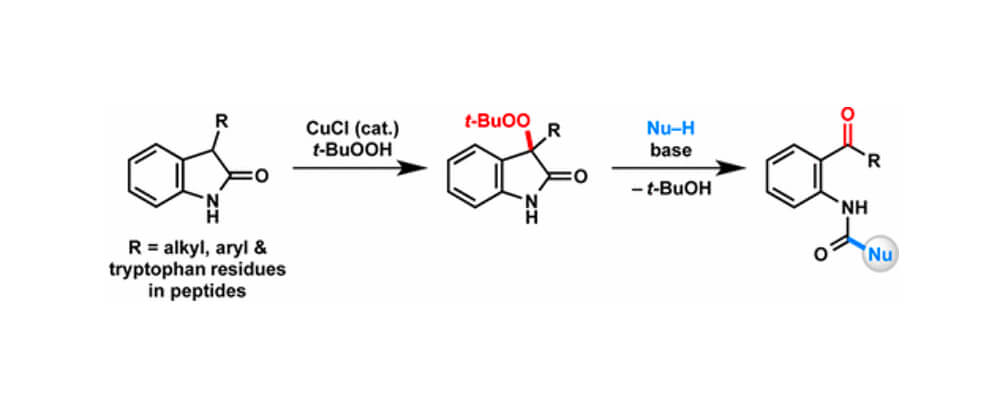Oxidative Fragmentations and Skeletal Rearrangements of Oxindole Derivatives
Hendrik F. T. Klare, Alexander F. G. Goldberg, Douglas C. Duquette, and Brian M. Stoltz
Organic Letters,
2017, 19, (5), 988-991; DOI: 10.1021/acs.orglett.6b03789

02/2017
Indoles and their derivatives are ubiquitous in molecules of biological activity, across pharmaceuticals, agrochemicals and organic dyes. Of particular note is that indole serves as the die chain of the essential amino acid tryptophan, a precursor to an array of important small molecules and complex natural products. Dietary tryptophan, that is not incorporated into proteins, is metabolized via oxidative fragmentation pathways to a variety of non-indole bioactive species.
The discovery of new indole fragmentation pathways and ring-expansion methods for organic synthesis is of particular interest, given the many methods available for the preparation and functionalization of indoles. The utility of these methods could be broadly amplified by considering them not simply as synthetic targets, but as versatile and accessible intermediates in synthetic strategies.
In this report from the Stoltz group disclose a mild, selective and biocomplementary sequence for oxidative indole fragmentation that hinges on a opper-catalyzed C–H peroxidation of oxindoles, followed by a base-mediated rearrangement, providing convenient access to a diverse array of hetereocyclic and aniline derivatives from a single precursor.